Inventory Shrinkage
No matter what kind of products you offer or who your clients are, inventory shrinkage has probably affected you. Shrinkage is simple to comprehend and define. It refers to any undetected or untraceable inventory loss.

Insufficient processes, technical errors, fraud, waste, internal or external theft, and challenges with different suppliers come under Shrinkage. It doesn’t even need to occur frequently or in large quantities.
However, many of you are already familiar with it and aware of the harm it may cause your business. An easy technique for assessing Shrinkage is to examine the gap between the ideal profit made from the projected inventory and the actual profit generated from sold products.
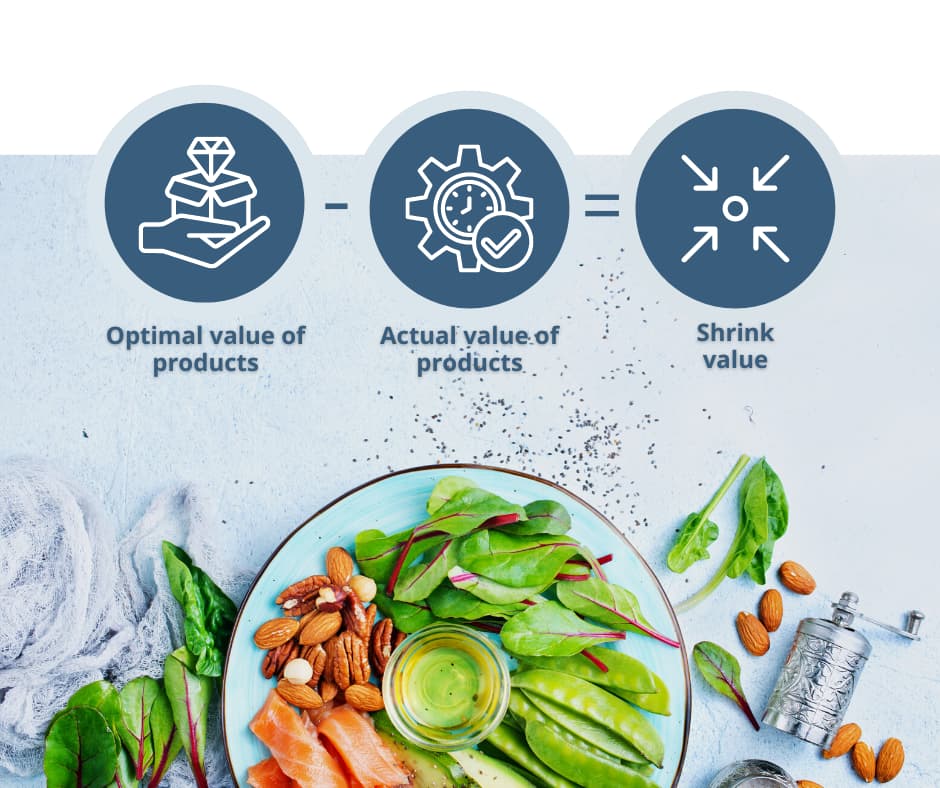
When used in the context of retail, it alludes to any products that have been lost or damaged between the time they departed the manufacturing floor and the moment they reached your delivery table for your customers.
Almost every sector experiences theft and fraud, but grocery store chains have additional challenges due to their extensive inventories, transient workforces, and the involvement of third-party companies. These days, Shrinkage is a significant issue for supermarkets, restaurants, and retail stores since it can be challenging to determine how it affects their profit margins.
Do Not Overuse It- Shrinkflation
Retailers encounter more difficulties when there are problems with the supply chain or a recession. The practice of a grocery store raising prices or charging the same amount for a partial product is referred to as “Shrinkflation.” The majority of the cost of shrinkflation is borne by consumers, and it may be introduced as a tactic to maintain profitability during periods of inflation.
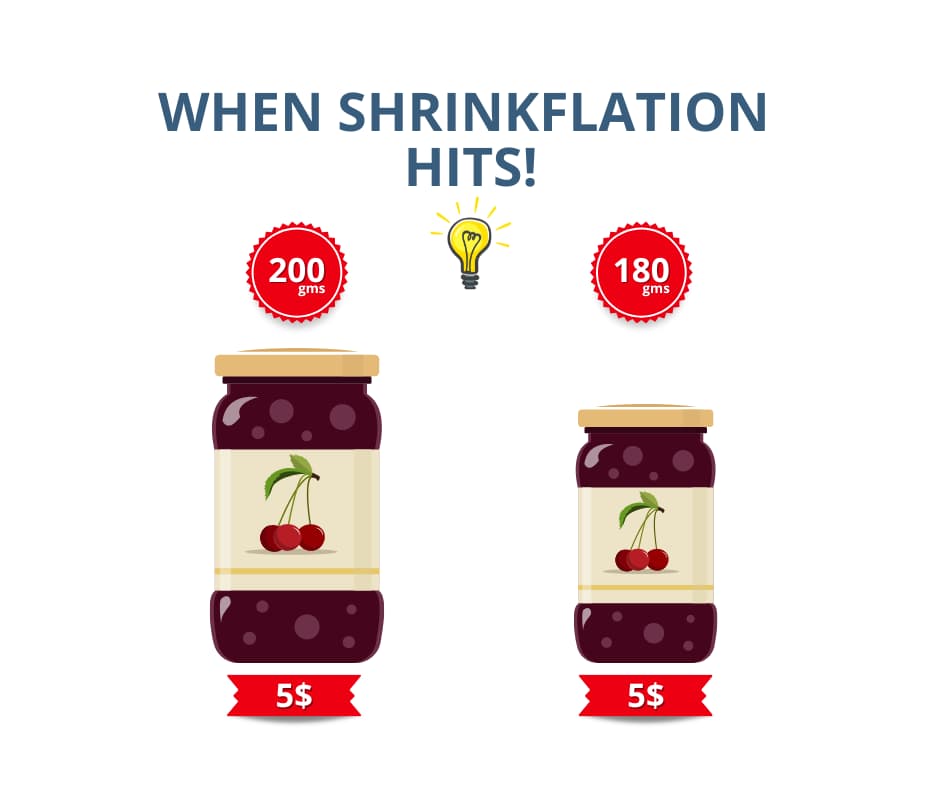
Remember that shrinkflation leads to providing customers with less value. Thus businesses mustn’t misuse it and only utilize it when required. Grocery shrinkage may be reduced using cost-saving techniques and continue concentrating on improving customer acquisition and satisfaction.
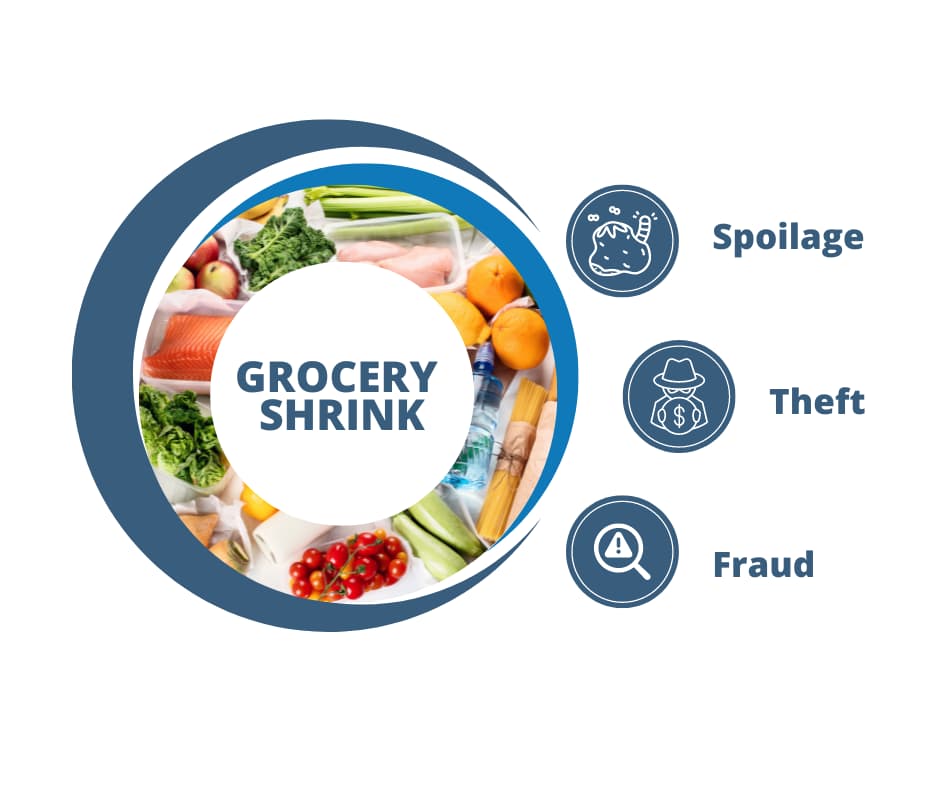
New research indicates that Grocery shrink is constantly growing. Grocers must prioritize waste reduction and profitability while adjusting to the purchasing behaviors of their marketplaces. Experts and operational teams may reduce Shrinkage.
- Enhancing operating procedures
- Improve food packaging to decrease food wastage
- Enhancing security
- Enhancing organizational-wide accountability to combat fraudulent activity and theft.
Reasons for Shrinkage
In supermarkets, the typical Shrinkage is caused by perishables. Any unreported loss resulting from the rotting and improper handling of perishable foods, beverages, or flower products is known as perishable shrink.
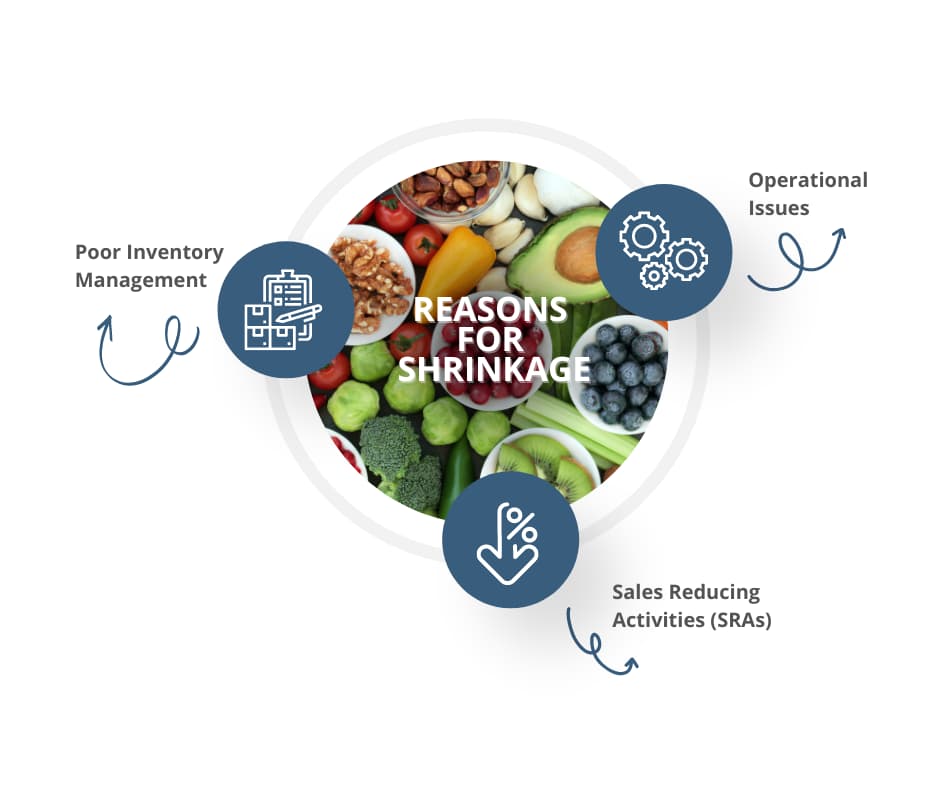
Poor Inventory Management
Poor inventory management results in more Shrinkage since customers’ expectations in the retail, restaurant, and grocery sectors don’t change as quickly.
This problem is frequently brought on by oblivious inventory ordering and a lack of insight into shifting economic and cultural needs that will affect upcoming purchasing decisions.
Operational Issues
High levels of shrink that are sometimes hard to quantify might be caused by issues with ordering too much, endorsement deals, and movement.
When demand surges resulting from seasonal or regional factors occur, stores that don’t consider their order amount and assortment run the danger of underperforming.
Sales Reducing Activities (SRAs)
When inaccuracies occur throughout the checkout process, sales are reduced. Both physical shop checkout and online retail checkout are included in this.
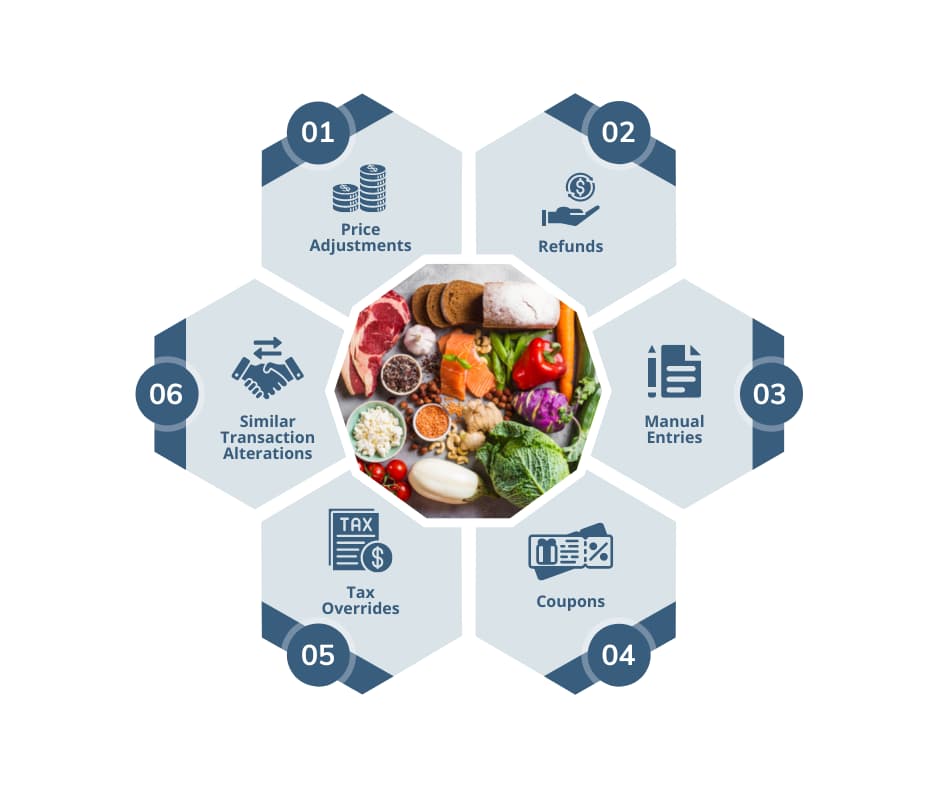
SRAs result in a loss of earnings and downsizing that may not be immediately evident, whether these reductions are intended or done illegally.
How to Control Shrinkage in the F&B industry?
Supermarket chains can make company-wide strategic efforts to prolong losses to compensate for perishable shrink. They can refine product packaging to shelf life and enhance the possibility of customers purchasing products.

Using proper food handling methods can minimize waste before the products are sold. Company executives must evaluate profitability, consumer demand, supply chain liquidity, pricing, visibility, and wastage risk.
Increasing forecasting accuracy
Companies may achieve the ideal inventory balance. Predicting entails purchasing the optimum number of products to prevent running out of stock on high-demand products avoiding ordering excessive quantities of products that might soon expire or, in the case of retail, be redistributed to local shops.
Analyze your data to lower shrink
Shrink tends to become better when businesses improve their ordering procedures. By ensuring that operations and teams are closely collaborating and using the same data in a joint effort to find shrink-causing activities, logistical concerns may be managed to boost revenue. To identify glitches and inadequacies and, of course, a plan to address them, data from transactions, inventory, in-store staff, customers, and location must all be evaluated and used.
Identify Activities before they become uncontrollable
SRAs (Sales Reducing Activities) can be managed or decreased by modifying policies, processes, or systems. These efforts must go beyond observation to uncover possible patterns and involve advanced analytics such as exception-based reporting (EBR). EBR analytics can target SRAs and other transaction system risk indicators to help firms better understand their present SRA-related Shrinkage.
Advance Solution – Farm to Plate
Even the slightest decrease in Shrinkage can result in significant cost savings and increased revenue for a business. Organizations can also implement measures to boost employee accountability and improve training to reduce accidental and intentional sales.
If you are looking for professional help, you may engage with the Farm to Plate team to identify the best solution for your business. Farm to Plate offers an industry-specific solution to recognize the root causes of Shrinkage better and strengthen a company’s processes to reduce Shrinkage.
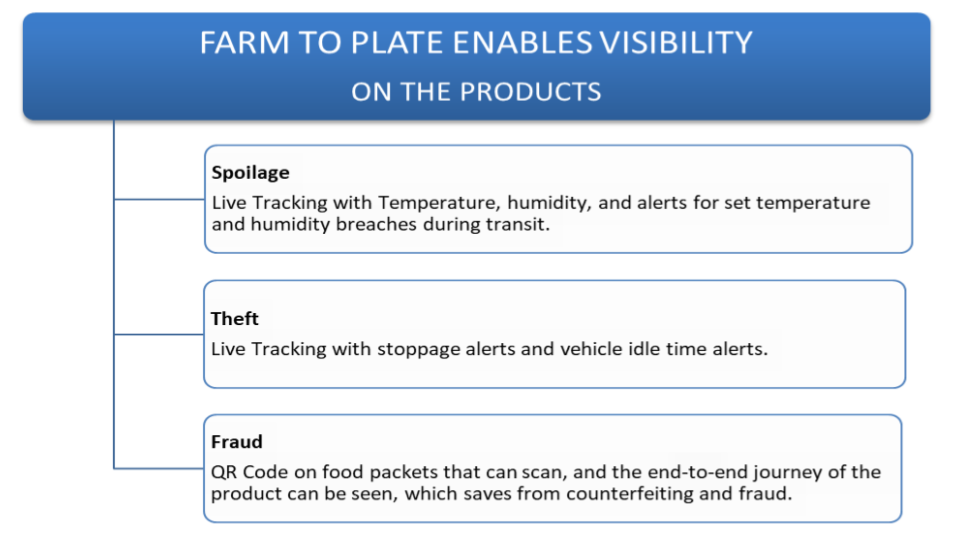
Farm to Plate has a simple UI that allows grassroots-level digitally unskilled laborers to fill out the form in 10 seconds. It unlocks the opportunity for millions of growers and fishermen to join the mainstream supply chain.
Relational mapping of input data fields with F2P and API integration with core F2P adhering to GS1 data standards, thus capturing values from the source. The ability to do product-level traceability via Lot level – Live Tracking and visibility of temperature and humidity parameters to monitor and track the products. It helps reduce the shrinkage with in-app alerts and notifications whenever these monitoring parameters cross the breach limits.

It embedded analytics assessing environmental parameters for perishables at a sampling rate of every 5 mins reducing manual quality checks and bias during QC inspection. It will further cover the whole range of food products at a lot level, whereas the manual QC inspection happens randomly for some but not all.
It embeds human behavior with the product for complete journey mapping, unlike many others who promote end-to-end automation, abstracts the credibility of the user making data entry, i.e., verified touch points of legitimate users with the product.
You can sell perishables at the sourcing time at a discount and avoid waste or offer exclusive ownership of a product in demand at a premium price. Farm to Plate brings accountability to the supply chain by pinpointing each participant and their deliverables in the value chain.
Conclusion
The process of finding Shrinkage may be complicated and necessitates a thorough plan applied throughout the industry. Companies must ascertain the optimal strategies for a particular industry and company model to achieve this successfully. Controlling for online shrink and optimizing their digital strategic vision may help operations and loss prevention teams identify strategies to reduce shrink-related losses.
Companies may overcome the everyday difficulties of downsizing by putting in place the technologies that enable them to see beyond simple statistics and get insights that can lead to significant expansions in operational processes. Companies may take control of the direction of their shrinking and loss to boost net profits over the long run by recognizing the critical reasons for shrinking and adopting solutions to decrease Shrinkage.
Namrata Anand, Technical Content Writer at Paramount Software Solutions & farmtoplate.io
